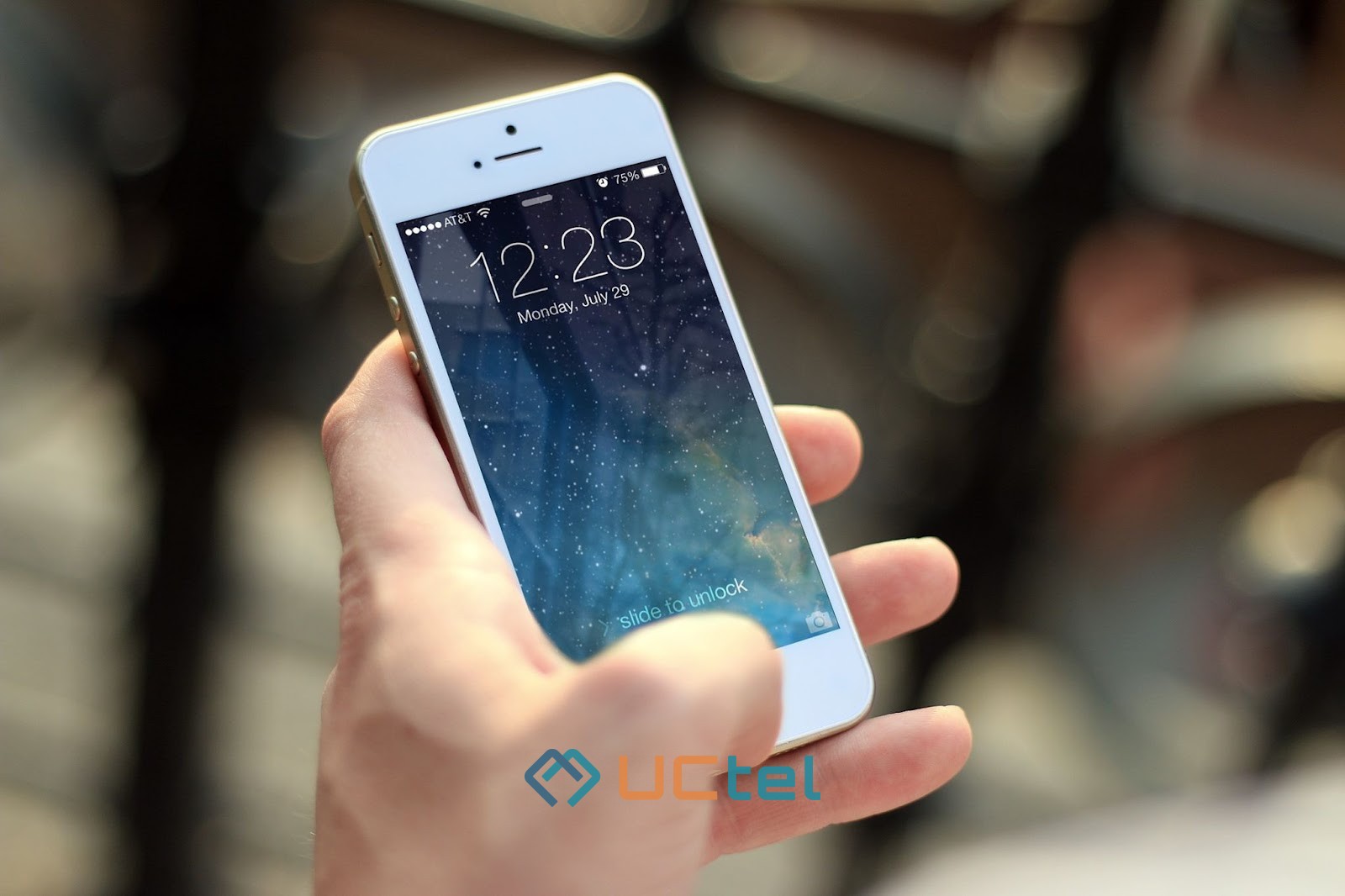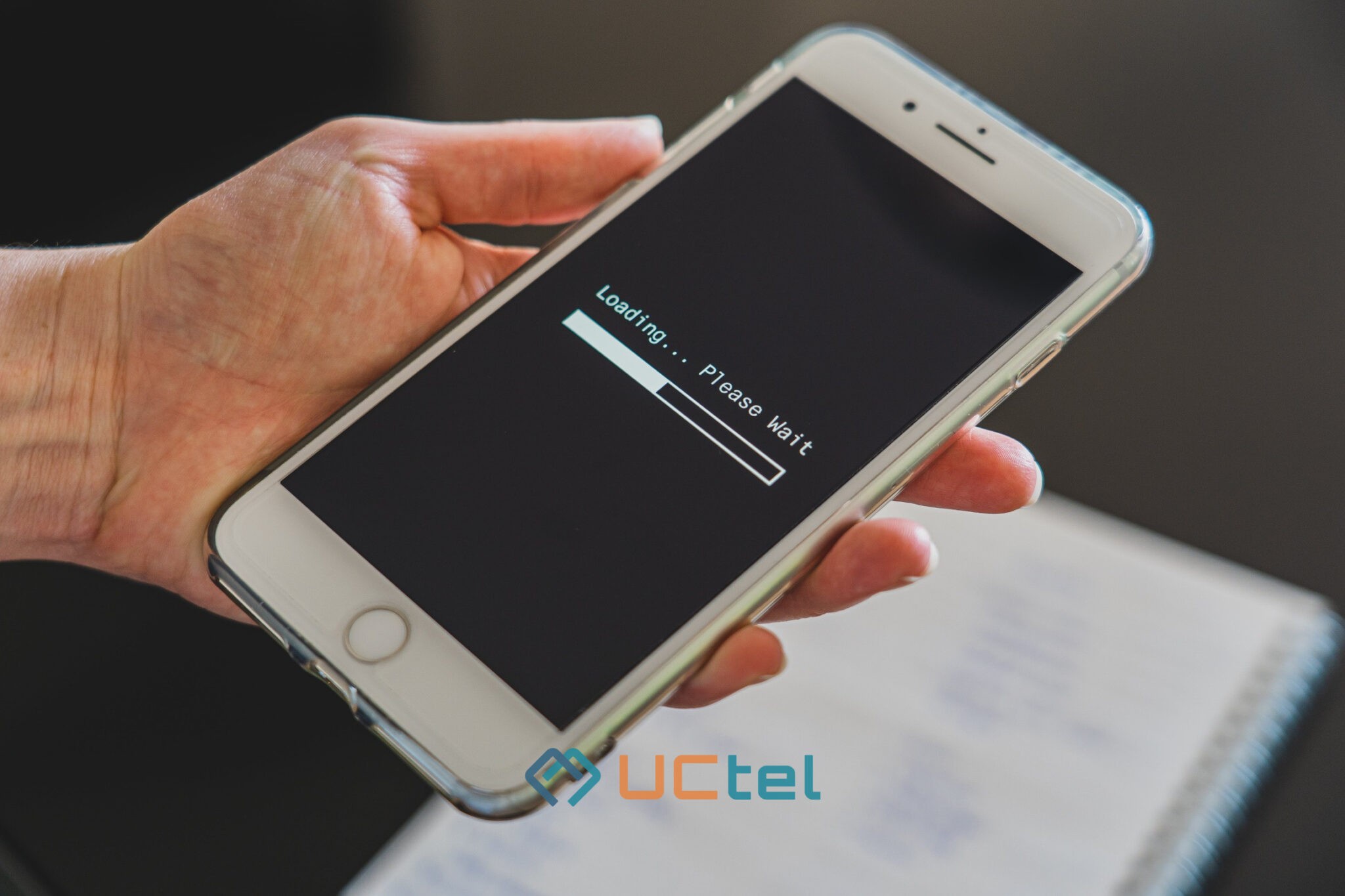How to Boost a 4G Signal Indoors in the UK

Table of contents
Struggling with a weak 4G signal indoors? We’ve all been there, staring at our phones in frustration as webpages take forever to load, calls drop mid-conversation, and messages refuse to send. Poor mobile signal indoors is a common issue across the UK and can be a major headache despite the fairly high official speed and throughput rates of the 4G tech.
At UCtel, we specialise in improving indoor mobile connectivity and have already helped countless businesses across the UK eliminate frustrating signal dead zones. With our proven techniques and advanced solutions, you don’t have to put up with poor 4G reception any more.
In this article, we will discuss the most common reasons for a bad signal and describe solutions for how to boost 4G signal indoors, as well as resolve signal issues once and for all.
Why Your 4G is So Bad: The Most Common Reasons
Before explaining how to improve a phone signal in the house, let’s clarify how 4G mobile tech works and why you might encounter a low-signal issue, since understanding why it happens is the first step to fixing it.
How 4G signals work
4G, or fourth-generation mobile network, transmits data through radio waves between your phone and the nearest cell tower. These signals travel over the air, covering large distances to deliver fast internet speeds and clear voice calls. Your phone constantly searches for the strongest signal from nearby towers. If multiple towers are within range, it automatically connects to the one providing the best signal.
Factors that affect indoor 4G reception
Several factors can weaken or block 4G signals before they reach your device, significantly reducing your signal strength indoors.
Network congestion
During peak hours or crowded events, when many users are connected to the same tower, the network can become overloaded, resulting in slower speeds and reduced performance for anyone connected to that particular tower.
Physical obstacles
Obstacles, such as tall buildings, mountains, thick walls, or even trees, can interfere with your mobile signal. These physical barriers can weaken the signal strength and make the overall network performance less efficient. The same is true for certain building materials like brick, concrete, metal, and glass.
Distance from a cell tower
Signal strength and quality deteriorate as you move away from the cell tower. If you are far from the nearest tower or in an area with limited coverage, you may experience weaker 4G signals and slower data rates.
Interference from other electronic devices
Household devices like microwaves and cordless phones can interfere with mobile signals. If your 4G reception is inconsistent, it may be due to electromagnetic interference from nearby electronics.
Device-related issues
Along with the network status and external factors, it’s also worth checking your mobile device as well. There are a few aspects that might potentially affect connectivity:
- Low battery charge can degrade the signal as mobile devices switch to an energy-efficient mode, spending less energy searching for coverage than in a normal one.
- Incorrect device settings like an occasionally activated flight mode, turned off package transfer function, or a mere mismatch between the date and time on your device and the current time zone can lead to signal failure.
- Physical malfunction of the device, such as improper installation or damage to the SIM card.
- Older or low-end devices may not support the latest 4G technologies, resulting in slower data transfer rates.
Problems with the network provider
Occasionally, a network provider may experience technical issues, maintenance, or upgrades that temporarily hamper signal performance. Likewise, different mobile providers offer varying levels of coverage across the UK, and your network might have limited coverage in your area.
Weather
Extreme weather conditions such as heavy rain, snowstorms, fog, or strong winds can interfere with the 4G signal and cause temporary service interruptions or performance degradation.
How to Check Your 4G Signal Strength
Now that you know what affects your 4G reception, the next step is to measure your actual signal strength to understand how to boost a phone signal in the house settings.
Examine phone signal bars vs dBm readings
Signal bars give you a quick visual indicator of reception, but they aren’t always accurate. Different phone models and network providers interpret signal strength differently. For a more precise measurement, you need to check your dBm (decibel-milliwatts) reading, which represents your actual signal strength in numerical form.
You need to open the Phone App and dial *#*#4636#*#* (Android) or *3001#12345#* (iPhone) and select Phone information or Field test mode accordingly. A reading closer to -50 dBm stands for a strong signal, while anything near -120 dBm means poor connectivity.
Compare signal strength for different UK networks
Test a different network provider’s SIM card in your phone to determine if your poor signal is network-related or location-based. UK providers offer mobile signal checkers where you can enter your postcode to see expected 4G coverage in your area:
Note that you’ll get estimated signal strength for different locations, while real-world reception can still vary, requiring you to boost a phone signal at home.
Use online coverage maps
For a more detailed and independent view of mobile signal coverage, consider using third-party tools and apps. The UK’s telecom regulator, Ofcom, provides an official mobile signal map that lets you compare different networks at your location.
Apps like OpenSignal and RootMetrics can show real-time network coverage data based on crowdsourced user reports, helping you identify weak spots and the best provider for your area. This allows you to find the best way to boost a phone signal in the house, office, or commercial area.
How to Boost a 4G Signal
Whether you're dealing with dropped calls, sluggish internet, or dead zones in your home or office, weak 4G connectivity can be incredibly frustrating. Fortunately, there are effective ways how to boost a 4G signal indoors in the UK.
Using a mobile signal booster
A mobile signal booster is one of the most effective ways to improve a phone signal in the house. Consisting of an external antenna, amplifier, and internal antenna, it works by capturing the outdoor mobile signal, amplifying it, and retransmitting a stronger signal inside your home or office.
Not all signal boosters are legal in the UK, though. The Ofcom-approved boosters are the only ones that comply with UK regulations, meaning they won’t interfere with the wider mobile network. At UCtel, we provide customised Ofcom-compliant mobile signal solutions for businesses based on advanced CEL-FI tech, ensuring stronger, more reliable 4G connectivity across the UK.
Enabling Wi-Fi calling
Wi-Fi calling allows your mobile phone to make and receive calls over a Wi-Fi network instead of a mobile network. This is especially useful in buildings where signal struggles to penetrate, yet the Wi-Fi network is strong. This function is supported by all major UK mobile networks and is available on all modern mobile phones. You can enable it on your phone via Mobile networks or Phone Settings.
Updating the device software
Keeping your phone software up to date ensures that you have the latest bug fixes and features, which may include signal reception improvements. Keeping your device up to date may help you improve a phone signal in the house settings.
Switching to a different network provider
As we’ve already mentioned, you can compare signal strength in your area provided by different mobile networks and pick the one with the strongest 4G network. This might be the best long-term solution to boost a phone signal indoors.
If you don’t want to switch providers completely, consider a SIM-only plan with a carrier that offers better indoor coverage. Some networks provide better indoor reception by using lower-frequency bands (like 800MHz), which penetrate buildings more effectively.
Using external antenna
If the problem of a poor office signal is beyond your control and results from poor coverage in your location, you can install an external antenna that will work as a repeater and help boost 4G signal strength. Note that you will need more than one antenna for large buildings, and their placement must be carefully planned to avoid blind spots.
How UCtel Can Help You
How to improve 4G signal strength legally and most effectively? For many years, UCtel has been creating advanced solutions for businesses, providing seamless and stable coverage on all sites. Along with strong expertise in enhancing mobile coverage and a deep understanding of connectivity issues, we offer:
- Tailored solutions for every environment, including offices, retail stores, warehouses, hospitals, hotels, and large corporate buildings.
- Ofcom-compliant equipment, ensuring legal and interference-free solutions.
- End-to-end service, handling everything from signal assessment and consultation to installation and support, so you don’t have to worry about a thing.
- Proven track record of success, with multiple businesses in our client portfolio benefiting from smooth communication, increased productivity, and enhanced customer experiences.
In a word, we offer solid professionalism, competence and service quality. We know how to boost a 4G signal at home or business, and we have the expertise to get you connected quickly and efficiently, whatever your situation.
Preventing future signal issues
Solving your immediate 4G signal issues, we also focus on future-proofing your mobile connectivity so you don’t face the same problems again.
- We conduct thorough site surveys and infrastructure assessments to design scalable solutions that account for future business expansions.
- We create infrastructure that allows for easy upgrades as mobile technology evolves, preventing the need for costly replacements.
- With the ongoing rollout of 5G, our solutions are aimed at supporting 5G networks, providing businesses with high-speed, low-latency connectivity.
- We provide routine signal audits to track performance, detect issues, and address them before they impact operations, as well as implement updates and enhancements to keep solutions running optimally as technology advances.
If you want to boost the 3G or 4G or utilise a 5G signal booster indoors to achieve the highest quality of communications for your business, don’t hesitate to contact us! We’ll secure your connectivity for now and for the future.
Final Thoughts
Poor mobile connectivity indoors is much more than mere inconvenience. It can break your personal or business communications, resulting in missed opportunities, poor productivity, and even revenue loss. You don’t have to put up with this. The longer you wait, the more it could cost you in time, efficiency, and peace of mind. At this point, you know how to boost a 4G indoors. Call us for a consultation and let’s fix your mobile reception for good!






